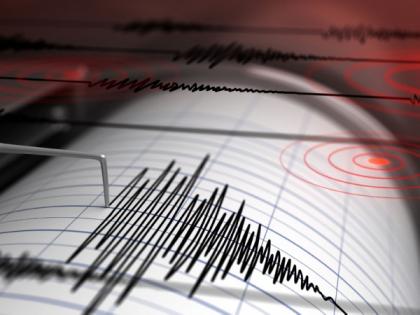5.4-magnitude earthquake jolts Islamabad, KP and Punjab
By ANI | Updated: August 2, 2025 20:39 IST2025-08-02T20:33:13+5:302025-08-02T20:39:45+5:30
Islamabad [Pakistan], August 2 : A 5.4-magnitude earthquake struck parts of Pakistan, including Khyber Pakhtunkhwa, Punjab, and Islamabad, ...

5.4-magnitude earthquake jolts Islamabad, KP and Punjab
Islamabad [Pakistan], August 2 : A 5.4-magnitude earthquake struck parts of Pakistan, including Khyber Pakhtunkhwa, Punjab, and Islamabad, leaving residents in a state of panic, ARY News reported.
According to the National Seismic Monitoring Centre (NSMC), the earthquake occurred at 2:04 AM PST at a depth of 102km, with its epicentre located in the Hindukush Mountain region in Afghanistan.
Tremors were also felt in various areas of Afghanistan and Tajikistan, NSMC stated.
The earthquake was felt in numerous districts of Khyber Pakhtunkhwa, including Peshawar, Swat, Malakand, Nowshera, Charsadda, Karak, Dir, Mardan, Mohmand, Shangla, Hangu, Swabi, Haripur, and Abbottabad, as per ARY News.
Tremors were also felt in the twin cities of Islamabad and Rawalpindi, Lahore, Attock, Taxila, Murree, Sialkot, Gujranwala, Gujrat, Sheikhupura, Ferozwala, Muridke and other parts of Punjab.
According to ARY News, the quake caused widespread panic, prompting people to rush out of their homes and recite verses from the holy book. However, no losses of life or property were reported.
Notably, Pakistan is considered one of the most seismically active countries in the world, situated in a region where the Indian and Eurasian tectonic plates collide.
This collision zone makes the country highly vulnerable to violent earthquakes. Provinces such as Balochistan, Khyber Pakhtunkhwa, and Gilgit-Baltistan lie on the southern edge of the Eurasian plate, while Sindh and Punjab are located on the northwestern edge of the Indian plate, contributing to frequent earthquake activity.
The country's geography makes certain regions more prone to earthquakes, including the high-risk areas, which include Khyber Pakhtunkhwa, Gilgit-Baltistan, due to their proximity to major fault lines like the Main Central Thrust.
Balochistan, located near the active boundary between the Arabian and Eurasian tectonic plates.
Other vulnerable regions, such as Punjab, which lies on the northwestern edge of the Indian plate, are susceptible to seismic activity. Sindh, though less prone, is still at risk due to its location.
One of the significant earthquakes in Pakistan's history includes the 1945 Balochistan earthquake (8.1 magnitude), the largest earthquake in Pakistan's history.
Disclaimer: This post has been auto-published from an agency feed without any modifications to the text and has not been reviewed by an editor
Open in app